DMM NEWACALOX DT33D
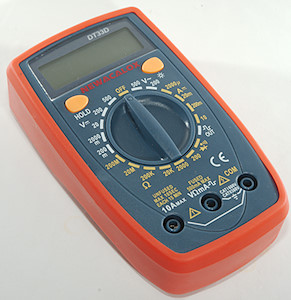
This is a cheap DMM with manual ranges and a minimum of functions.
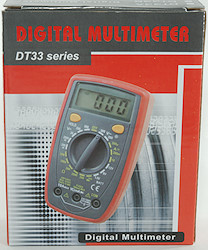

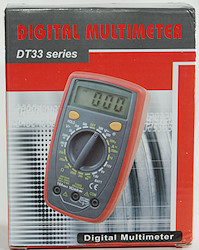

The box for the meters is without any brand name on it, but is designed for this series of meters.
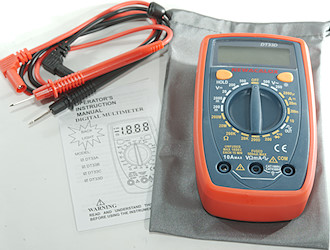
In the box was the meter, probe leads, a instruction sheet and a bag. The instruction sheet is for all four models in the series (A, B, C, D).
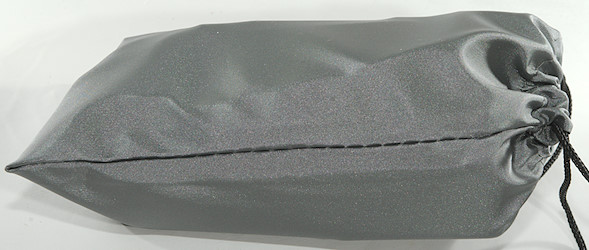
The meter and the probes fits in the bag.

The standard probes are a on the small side and made of a fairly hard plastic.
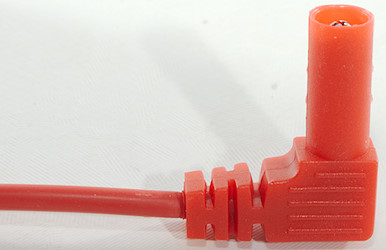
The plugs are fully shrouded, but a bit shorter than standard probe plugs.

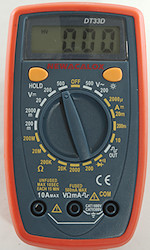
The tilting bale will only add a small angle to the meter and is stable enough to use the range switch and buttons. It is rather thin and will bend a bit when the range switch is used.
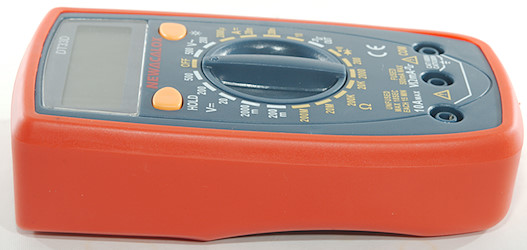
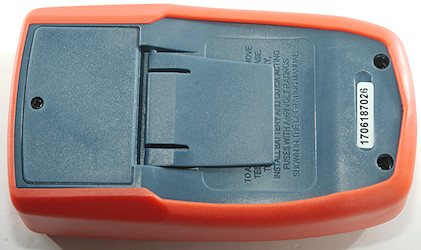
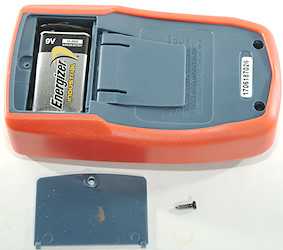
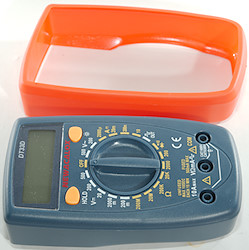
Display
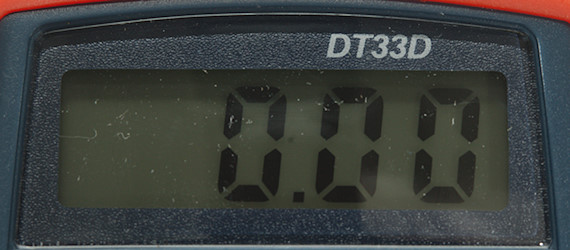
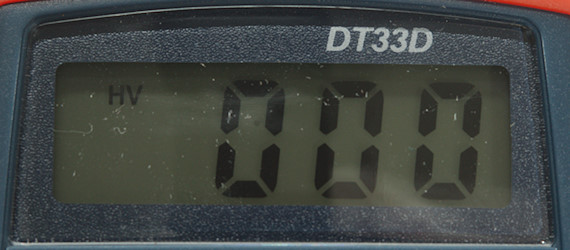
Typical display during usage, it will show the number and HV when 500V range is selected. The hold button will turn on a H.
Functions
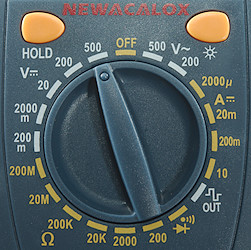
Buttons:
- Hold: Will freeze the display reading, until pressed again.
- Backlight: Turn backlight on, after some time it will slowly fade.
Rotary switch:
- Off: Meter is turned off
- VAC: 500 & 200: AC voltage ranges.
- ADC: 2000u, 20m, 200m, 10A: DC current range
- OUT: Square wave output
 : Continuity and also announced as diode, but it is not.
: Continuity and also announced as diode, but it is not.
- Ohm: 200, 2000, 20k, 200k, 20M, 200M
- VDC: 200m, 2, 20, 200, 500: DC voltage range.
Input
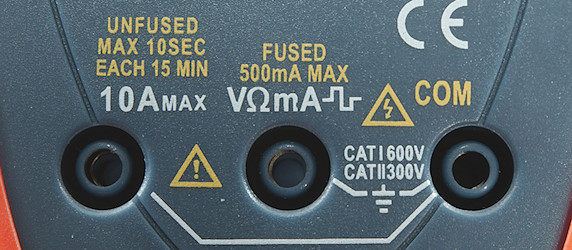
- 10ADC: 10A unfused DC current input.
- xxx: All other ranges, including mA. It is always problematic when a current range shares connector with a voltage range, if the switch is in the wrong position the fuse will blow (at least). This will only affect current, voltage will still work.
- COM: The common terminal for all ranges.
Measurements
- Volt and frequency
- 5V AC readings is 5% down at 300Hz (Rectification error is not included).
- Input impedance is 10Mohm on DC
- Input impedance is 5Mohm on AC (For half the sine wave).
- AC range uses a single diode, i.e. DC will show a (wrong) voltage if it has the correct polarity.
- Input protection is 220V AC/DC for 200mV range and 500V AC/DC for other voltage ranges.
- Current
- 10A range is unfused
- mA range is fused with a 0.5A/250V 5x20mm glass fuse
- Ohm, continuity, diode and capacitance
- Ohm needs about 1s to measure 100ohm
- Ohm voltage is 3V open in 2k and 200ohm ranges and 3.5mA shorted in 200ohm range and 1.7mA in 2000ohm range
- Ohm voltage is 0.26V open in 20k and above ranges and 20uA shorted in 20k range down to 0.025uA in 20M range
- Ohm voltage is 3V open in 200M ranges and 3uA shorted
- Continuity is slow (About 500ms).
- Continuity beeps when resistance is below 66ohm.
- Continuity is 2.5V open and 1.2mA shorted
- Continuity use same ohm scale as 2kohm range.
- Diode range is same as continuity and it will show ohm
- Overload protection is 220V AC/DC for 15 seconds.
- Miscellaneous
- Current consumption of meter is 1mA except 2k, 200ohm and Continuity where it is 2.4mA (Backlight adds a burst of up to 15mA)
- Meter turns off below 3V, but it might show overflow before, battery symbol show at 6.5V.
- Readings will be correct down to 4.3V, below that they can be much to high (Double or more).
- Backlight works down to about 3.3V where it is fairly dim.
- Viewing angle is good
- Display updates around 2 times/sec
- Backlight will fade to off in about 20 seconds.
- Will not automatic turn power off
- Standard probes cannot be fully pushed down, but they do make contact.
- The meter usual need a couple of display update to reach the final value.
- Weight is 182g without accessories, but with sleeve and batteries.
- Size is 133 x 77 x 37mm
- Probes
- Probe resistanse 44mOhm for one.
- Probe wire is a bit thin, the are 65cm long.
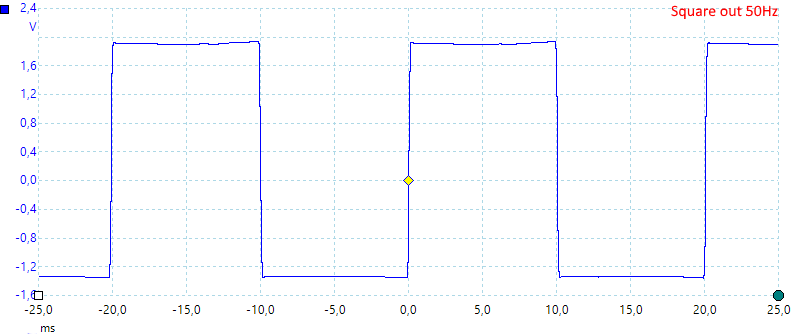
The square output is 50Hz with about 3.2Vpp
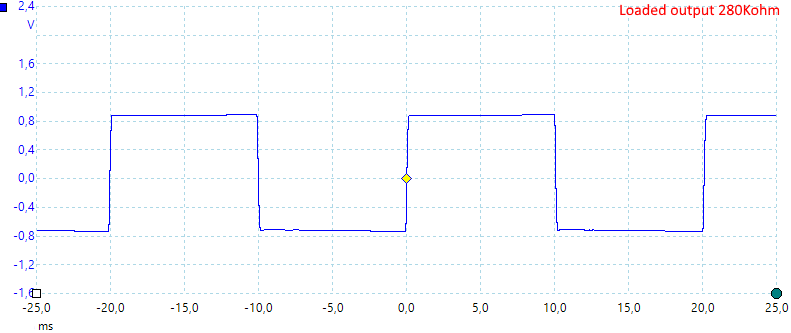
The output impedance is around 280kOhm

Tear down
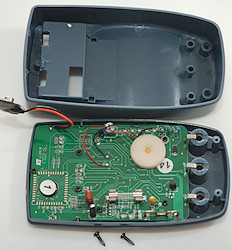
I had to remove two screws, the battery cover also had to be removed to get the battery clips out.
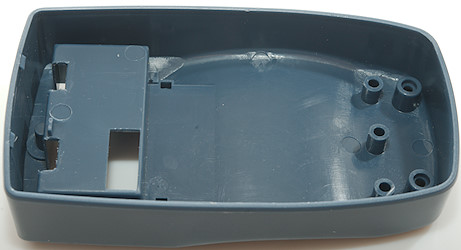
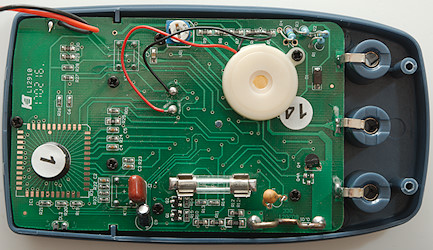
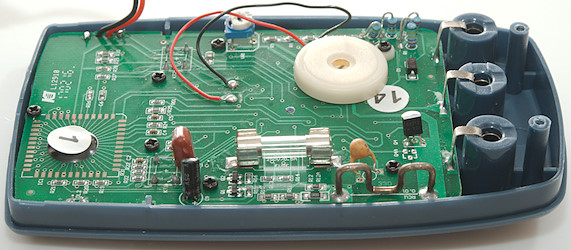
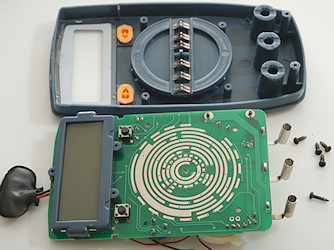
To get the circuit board out I had to remove 4 screws. When this is done, the meter is rather tricky to put together again, due to the steel balls in the range switch.
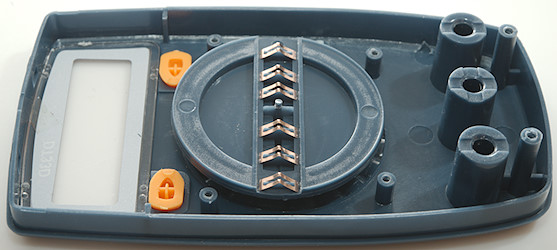
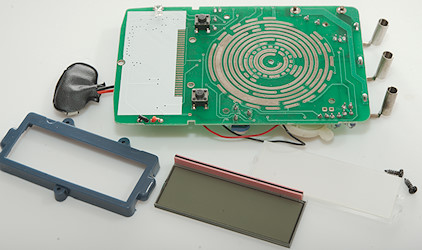
And 3 more for the display (I removed one of them above).

On this side of the circuit board is the range switch and two real switches for the buttons, there is also a backlight led.
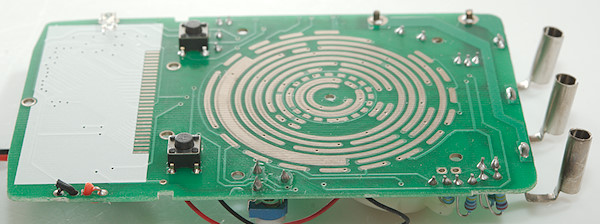
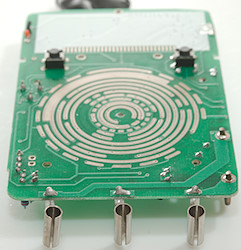
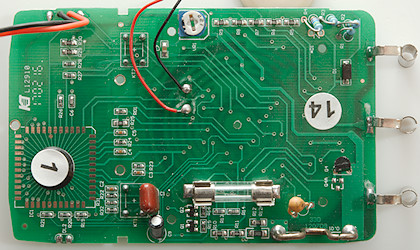
R10, R11, R12, R12A are the shunts for the uA and mA ranges. The transistors Q1 and Q2 is input protectiontogether with the PTC Rt1.
The resistors R1, R2, R3, R4 and R5 is the voltage input resistors (Nearly 10MOhm). The resistors R6, R7, R8, R9 is the input divider and D1 is the rectifier for the AC range.
The glass fuse is used for the uA and mA range, but not for ohm and V ranges. I am missing some diodes to protect the shunt resistors, this means they may be damaged before the fuse blows.
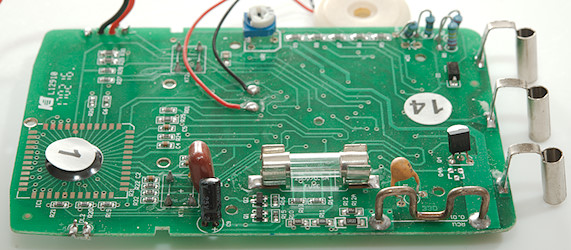
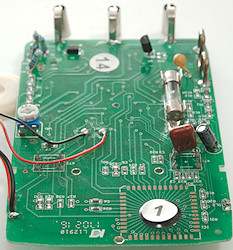
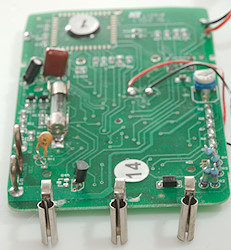
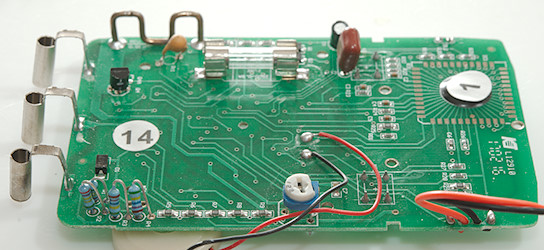
Conclusion
A unfused meter cannot have a CAT rating.
This is a fairlly simple meter with a minimum of ranges. It works fine and if the functions are enough it can be used, but unfused meters are best keept away from mains and from high current sources.
Notes
This meter exist with many different names on it and small variations in functions.
This meter looks like it is based on the UNI-T UT33D, but ranges are placed different on the switch and there is a battery lid.
How do I review a DMM
More DMM reviews
 : Continuity and also announced as diode, but it is not.
: Continuity and also announced as diode, but it is not.


















 : Continuity and also announced as diode, but it is not.
: Continuity and also announced as diode, but it is not.


















